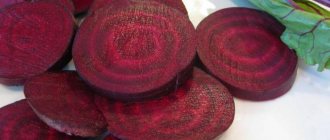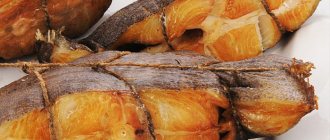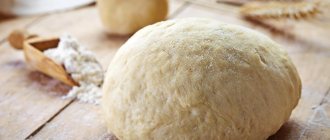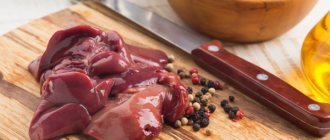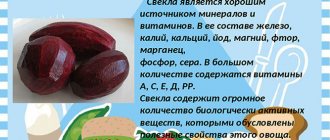Raspberry jam helps cope with many diseases. It contains valuable minerals, trace elements and vitamins. This is a tasty and healthy sweet that is easy to prepare. Like any other product, raspberry jam can be both beneficial and harmful, so it is worth considering all the contraindications to its consumption, as well as calorie content and the best home recipes.
Product calorie analysis
Ratio of proteins, fats and carbohydrates:
- home
- Product composition
- Composition of fruits and berries
- Chemical composition of “Raspberry jam”
Tags:
Raspberry jam calorie content 273 kcal, chemical composition, nutritional value, vitamins, minerals, benefits Raspberry jam, calories, nutrients, beneficial properties Raspberry jam
Energy value, or calorie content
- this is the amount of energy released in the human body from food during the digestion process. The energy value of the product is measured in kilocalories (kcal) or kilojoules (kJ) per 100 grams. product. The kilocalorie used to measure the energy value of food is also called a food calorie, so when caloric content is reported in (kilo)calories, the prefix kilo is often omitted. You can see detailed energy value tables for Russian products here.
The nutritional value
— content of carbohydrates, fats and proteins in the product.
Nutritional value of food product
- a set of properties of a food product, in the presence of which the physiological needs of a person for the necessary substances and energy are satisfied.
Vitamins
, organic substances required in small quantities in the diet of both humans and most vertebrates. Vitamin synthesis is usually carried out by plants, not animals. A person's daily requirement for vitamins is only a few milligrams or micrograms. Unlike inorganic substances, vitamins are destroyed by strong heat. Many vitamins are unstable and are “lost” during cooking or food processing.
Contraindications to raspberry jam
Despite all the beneficial properties, raspberry delicacy has many contraindications. The product should not be used:
- in case of individual intolerance, raspberries very often provoke allergic reactions;
- if you are prone to obesity, high-calorie jam promotes weight gain;
- for sensitive tooth enamel, the acids in the treat have a negative effect on the tissue;
- for diabetes and dieting;
- for hemophilia, the product thins the blood;
- for gastritis, pancreatitis and stomach ulcers;
- for bronchial asthma;
- for gout.
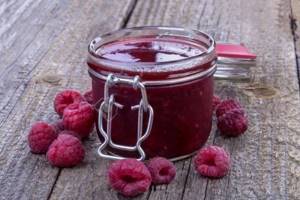
Contraindications to raspberry jam include asthma and gout.
You should try jam with caution if you have kidney or bladder stones. The treat has a good preventive effect, but with existing stones it can lead to their movement and severe pain.
The benefits and harms of jam
When figuring out whether jam makes you fat, women should learn that dessert comes in different forms. Sweets are prepared from fruits or berries, using sugar or fructose; the fruits are boiled or ground without heat treatment. The practical benefits of jam are that it:
- has a beneficial effect on metabolism;
- lifts your mood due to the release of serotonin into the blood;
- strengthens the immune system, protects the body from colds;
- stimulates the production of digestive juice in the stomach and intestinal motility.
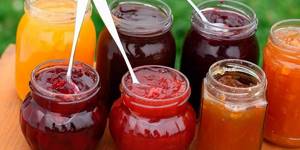
The question of whether it is possible to eat jam while losing weight cannot be left without studying the harm of the product, which:
- increases the manifestations of diabetes mellitus and obesity;
- harms teeth - destroys enamel, provokes the development of caries in the absence of proper hygiene after consumption;
- may contribute to the development of stomach ulcers.
What are the benefits of jam?
For weight loss, the benefits of jam are to enhance metabolism and replace sugar. If you cook a dessert with fructose, from sour berries (raspberries, black currants), enhance it with ginger and orange peels with zest, you will get a low-calorie product that only brings benefits. Reasonable daily intake of two to three teaspoons at breakfast with porridge:
- will charge you with vitamins;
- has a beneficial effect on health;
- will give vigor;
- will help you lose excess weight.
Contraindications
The product has a number of contraindications that must be taken into account when consuming :
- Individual intolerance. The berry often causes the development of allergic reactions.
- Obesity. Dessert is high in calories and promotes weight gain.
- Diabetes.
- Diseases of the digestive system: gastritis, pancreatitis, gastric ulcers.
- Bronchial asthma.
- Gout.
- Hemophilia. The berry helps thin the blood, which creates a risk of bleeding.
- Age up to 3 years.
It should be used with caution if you have urolithiasis, as this can provoke the movement of stones and cause severe pain.
Is it possible during pregnancy and breastfeeding?
Pregnant women can consume jam, but with caution:
- First trimester. It should be completely excluded from the diet. The acetylsalicylic acid contained in the dessert can harm the fetus and cause miscarriage.
- Second trimester. Allowed in limited quantities.
- Third trimester. The product is excluded because it helps improve blood circulation and thin the blood, which can cause bleeding and premature birth.
During the period of breastfeeding, delicacies begin to be introduced into the diet only six months after birth . This is due to the fact that the berry can provoke an allergic reaction in a child in the form of rashes and redness on the skin.
Calorie content of jam
When studying how many calories are in a spoonful of jam, experts answer - approximately 27. The energy value of the dessert is 200-400 kcal per 100 grams, depending on the type of raw material and the amount of added sugar. The lowest-calorie jam that you can eat while losing weight cannot even be called such in the true sense of the word. On a diet, it is better to eat ground berries or fruits with fructose, boiled for 5-10 minutes, or better yet, fresh ones. This way the body will receive vitamins and fiber, and not excess sugar, which is not at all useful for weight loss.
Nutritionists advise eating jam in the morning with tea, but without bread. At night, the treat is prohibited for consumption due to the deposition of all calories in fat reserves. Compatibility is also important - it is recommended to eat a carbohydrate product alone; it cannot be combined with protein foods (nuts, cottage cheese) and honey. The most beneficial for the figure are cherry, pumpkin, zucchini and apple slices, and the harmful ones are strawberry, wild strawberry, and blueberry. It's best to eat homemade treats rather than the store-bought version, which is loaded with nitrates and sugar.

Jam for weight loss
Eating high-calorie jam while on a diet is not recommended, but you can reduce the energy value by reducing added sugar and including spices. It is good to include ginger with orange peels in dessert. Such supplements speed up metabolism, break down fats, and relieve cravings for sweets. You can cook it only from ginger root with lemon juice - the delicacy has a unique taste:
- To prepare you will need 150 grams of ginger root, two large oranges, lemon, a glass of sugar, 75 ml of water.
- The root is cut into cubes, filled with water, and the orange peels are soaked for three days.
- The ingredients are crushed, mixed with the juice of half a lemon, and cooked for five minutes.
- The finished treat is stored in the refrigerator in sterile jars with lids.

Pumpkin with oranges
Pumpkin jam is useful for weight loss, because the components in its composition normalize metabolism. The cooking proportions are as follows: for three kilograms of pumpkin pulp without peel and seeds, two large oranges, lemon, a little sugar. Peculiarities:
- Vegetables and citrus fruits are cut into cubes, covered with granulated sugar, and boiled for 10 minutes after boiling.
- The mixture is infused for three hours, boiled for 15 minutes, and placed in sterile jars.
- There are 25 kcal per 100 grams.
Raspberry
The properties of raspberry jam are said to be beneficial not only for weight loss, but also for the general condition of the body. The delicacy strengthens the immune system, protects against colds, and “kills” harmful bacteria. Nutritionists recommend eating no more than 2.5 teaspoons of the product per day, which contains about 10 g of sugar. This amount will not harm your figure and will not allow calories to be deposited.
Experts advise eating mashed berries with sugar or fructose, and if you cook them, the heat treatment should not take longer than 10-15 minutes to preserve the benefits. Raspberries have a positive effect on digestion - the seeds improve intestinal motility, normalize the production of gastric juice, help increase the feeling of satiety, and prevent hunger for longer.

Currant
Currant jam is considered one of the most useful for weight loss. It is better to process it for a short time in order to preserve the maximum amount of vitamin C. Unlike other types, it is better to cook blackcurrant jam rather than grind fresh berries. Currants refine sugar, which under its influence loses some of its harmful properties. It’s easier to cook for five minutes:
- For a kilogram of berries, take one and a half kilograms of sugar, one and a half glasses of water.
- Boil syrup, add berries to it.
- After five minutes of cooking, the dessert is ready.
Apricot
Apricot jam is tasty and healthy for weight loss, which can be eaten to supply the body with vitamins A, B, C, potassium, magnesium, phosphorus, iodine, iron and calcium. The delicacy retains substances even after heat treatment, improves digestion, blood circulation, and restores hemoglobin. Carotene has a positive effect on vision, metabolism and brain function, and removes excess fluid.
Counting calories
Fresh raspberries have 46 kilocalories per 100 grams of product. Of course, after the berry turns into jam, the calorie content of the product increases significantly due to the addition of sugar.
100 grams of finished jam contains from 270 to 275 calories. Anyone who follows a healthy diet every day and monitors their diet understands that jam is a very high-calorie product. For example, a piece of any cake has almost the same calorie content as this aromatic delicacy of equal weight.
Therefore, in order to get maximum health benefits and avoid harm to your figure, we recommend monitoring the amount of jam you consume. Of course, if you eat a little of this product a day, you will get nothing but benefits. If it is just one teaspoon consumed with tea, then, as a rule, it is only 7-8 grams of jam, which means only 18-20 kilocalories.
By the way, when consuming this or that product, in particular jam, pay attention not only to the calorie content of the product, but also to the carbohydrate content, since they are the ones that harm our slimness. There are practically no proteins in this product, only 0.6 grams, and even less fat - 0.2 grams, but carbohydrates - 70.4 grams. If we look at everything in percentage terms, it turns out that proteins and fats together occupy less than 1%, and carbohydrates account for almost three-quarters of the total weight.
How many calories are in jam
Most (if not all) weight loss diets recommend limiting, first of all, the consumption of fats and sugars, and the ban mainly concerns sucrose, as the most harmful of simple carbohydrates. In this regard, we stop putting sugar in tea, eating sweets and confectionery, soda, candy, and giving up jam. And if the first listed restrictions are completely justified, then giving up jam is not so simple. On the one hand, the calorie content of jam is quite high, and the sucrose content in it is substantial. On the other hand, jam is made from natural fruits and berries and contains a lot of useful substances. And on the third hand, during a diet you really want to eat at least something sweet, allow yourself at least some dessert, otherwise it becomes completely sad - after all, even fruit can sooner or later get boring. So what to do? Should you exclude jam from your diet or not? And by the way, how many calories are in jam?
The main source of calories in jam is sucrose. As you know, jam is cooked with a lot of sugar. And the fruits themselves contain simple carbohydrates - fructose and glucose. The calorie content of jam is approximately the same as the calorie content of candy - one candy and one teaspoon of jam contain approximately the same number of calories.
You can find out how many calories are in jams made from different fruits from the jam calorie table.
Calorie content of jam per 100 g of product:
- pear jam – 214.6 kcal;
- apricot jam – 241 kcal;
- quince jam – 221.8 kcal;
- watermelon rind jam – 263 kcal;
- barberry jam – 203.7 kcal;
- lingonberry jam – 160.3 kcal;
- lingonberry-apple jam – 247.1 kcal;
- lingonberry jam with cinnamon and cloves – 243.7 kcal;
- pitted cherry jam – 219.4 kcal;
- honeysuckle jam – 218 kcal;
- blueberry and raspberry jam – 229.1 kcal;
- raisin jam – 295.9 kcal;
- citrus zest jam – 174.3 kcal;
- sea buckthorn jam – 164.6 kcal;
- raspberry jam – 275 kcal;
- plum jam – 281 kcal;
- strawberry jam – 271 kcal;
- tangerine jam – 278 kcal;
- blackcurrant jam – 263 kcal;
- apple jam – 254 kcal;
- peach jam – 248 kcal;
- strawberry jam – 274 kcal;
- chokeberry jam – 246 kcal;
- cranberry jam – 198 kcal.
As we can see, the calorie content of jam is quite considerable. However, you most likely will not eat jam in large quantities - you will simply add a couple of spoons to your tea or eat a few spoons of jam as a snack with tea.
One teaspoon contains about 15 g of jam. That is, if we conventionally take the calorie content of jam as 250 kcal per 100 g (average calorie content of jam), then 2 teaspoons of jam will contain 75 kcal. You can totally afford it.
Rules for using raspberry jam
In order for raspberry jam to be beneficial and not harmful, you need to use it wisely:
- The maximum daily dosage of treats should not exceed 7 large spoons. It is better to limit yourself to smaller volumes and consume 2-3 spoons of the product per day. Eating too many sugary treats will impair the functioning of the pancreas.
- It is best to eat jam in the morning or evening along with tea; hot drinking enhances the beneficial properties of the product. It is not recommended to consume the treat immediately before bedtime. But a few hours before going to bed, you can eat raspberry jam.
- It is not advisable to consume the product daily; it is better to eat it twice a week.
- During a diet, you cannot include treats in your diet, although jam is much healthier than chocolate and sweets, it will not help you lose excess weight.
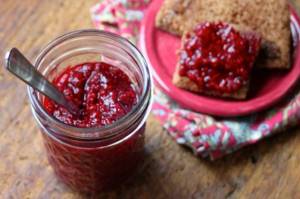
It is recommended to eat raspberry jam no more than 2-3 large spoons per day
Advice! Organic acids in jam have a negative effect on the condition of tooth enamel. After eating the treat, you should rinse your mouth or even brush your teeth.
The benefits of jam
Despite the high calorie content of jam, it is very healthy. Natural fruits and berries from which jam is made contain vitamins, fruit acids, and a large number of useful microelements. During heat treatment, some vitamins (in particular, vitamin C) are partially destroyed. Therefore, it is better to eat jam that has undergone minimal heat treatment (for example, currant jam, which is often not boiled at all, but simply ground with sugar and sealed in jars).
Heat treatment does not destroy B vitamins, fiber and minerals contained in the jam.
Jam is used for colds, weakness, and headaches; chokeberry jam lowers blood pressure, and sea buckthorn jam removes salts and toxins from the body.
The most common use of jam is for colds. Thanks to vitamins and high calorie content, jam has antipyretic and anti-inflammatory effects. Many jams made from sour varieties of berries retain a fairly large amount of vitamin C and can be used to prevent colds and strengthen the immune system, as well as to quickly restore strength after illness. Berry jam relieves sore throat and cough, warms and soothes. The B vitamins contained in berries help fight stress, depression (including the so-called “winter depression”), anxiety, improve sleep and stimulate brain function, improve memory and attention. Pectins contained in jam help eliminate toxins and heavy metal salts from the body.
Harm of raspberry jam
In some cases, raspberry jam can harm the body. In particular, it becomes dangerous in diabetes, the product contains too much sugar and leads to sharp fluctuations in glucose levels.
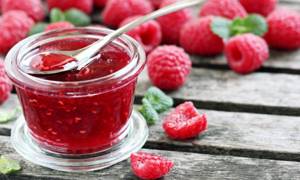
Raspberry jam should not be consumed if you have diabetes or acute stomach diseases.
The treat should not be consumed in case of acute gastric or intestinal diseases. A product with a high sugar content negatively affects the mucous membranes and only aggravates the aggravation.
Raspberry jam is a very nutritious product. If consumed in excessive quantities, the body will be harmed. The delicacy will not only lead to weight gain, but will also provoke allergic reactions and negatively affect the functioning of the pancreas.
Features of various types of jam, calorie content
Sea buckthorn jam retains a lot of vitamin C and is a valuable source of potassium, which is necessary for muscle function and for removing excess salt and water from body tissues, as well as beta-carotene, which is converted into vitamin A in the body. Sea buckthorn is the undisputed leader in vitamin C content among berries, even black currant has less ascorbic acid than sea buckthorn. Therefore, a couple of spoons of sea buckthorn jam a day will help you strengthen your immune system and maintain health and vigor throughout the winter. In addition, sea buckthorn contains natural antibiotics - phytoncides, so at the first signs of illness, you can safely eat a few spoons of sea buckthorn jam - this will only bring benefits and give the body good support in the fight against the disease.
Cranberry jam successfully fights “bad” cholesterol and high blood pressure. Cranberry has a beneficial effect on the kidneys and removes excess fluid, salts and toxins from the body. Cranberry improves stomach function and prevents stomach ulcers; due to its high potassium content, cranberry jam strengthens the heart muscle. The calorie content of cranberry jam is 198 kcal per 100 g (30 kcal per teaspoon).
Chokeberry jam reduces blood pressure, which can be very useful for hypertensive patients. Chokeberry also helps relieve stress – both physical and mental. The calorie content of chokeberry jam is 246 kcal per 100 g.
Raspberry jam is the first aid for colds; it can be called natural aspirin. Raspberry jam also strengthens bones due to its high calcium content. The calorie content of raspberry jam is quite high - 275 kcal per 100 g, but for a cold, tea with raspberry jam is the first remedy.
Strawberry jam is high in antioxidants, so it preserves youth and prevents the formation of cancerous tumors. The calorie content of strawberry jam is 271 kcal per 100 g.
Blueberry jam contains many vitamins, iron and manganese and is an excellent preventative against anemia. Calorie content of blueberry jam is 214 kcal per 100 g.
Chemical composition of raspberry jam
Raspberry jam is one of the most delicious and healthy delicacies present on the table throughout the year. They use it not only for pleasure, but also for medicinal purposes. The product owes its medicinal properties to its rich composition, which contains:
- vitamins A and E;
- vitamins B1, B2 and B6;
- beta-carotene and vitamin PP;
- ascorbic acid;
- phytoncides;
- potassium and iron;
- phosphorus, sodium and magnesium;
- calcium;
- acetylsalicylic acid;
- fiber and ash;
- essential oils and iodine;
- chlorine, boron and copper;
- pectins.

The delicacy mainly consists of carbohydrates, about 7.4 g per 100 g of product. Proteins and fats occupy a very small proportion, 0.6 and 0.2 g, respectively.
Girls, I'll kill him now.
Guardian of Dreams
| HTML code: |
| BB code for forums: |
How will it look like?
Diets.ru → Girls, I’ll kill him now.
| We sit in the kitchen and argue with the beloved: he believes that it is healthier (in terms of calories) to eat 3 teaspoons of apricot jam than 1 apple. I can’t find the calorie content of jam anywhere - the fact that almost 400 kcl in 100 grams of sugar does not convince him, because jam DOES NOT CONSISTE OF SUGAR ONLY, there are also APRICOTS in there! And damn it’s not breakable at all! Who can tell me information about jam, otherwise I might end up a widow Read more |
Diary of the Dream Keeper:

Sometimes people refuse a delicious bowl of jam when visiting, citing the fact that the calorie content of the jam is too high. In principle, these people are right, because jam is indeed a very high-calorie product. And it's all about sugar, of course.
It’s surprising that we are used to closing a large number of jars of jam for the winter, naturally without eating it during the winter. The longer it sits, the more it can become sugary. This only harms the jam. How do you feel about sweets? How many candies would you eat in one sitting: one, two, three? Please note that one teaspoon of jam has the same calories as one chocolate candy.
Depending on the type of jam, you can turn a blind eye to the calorie content, because its healing qualities at some point will turn out to be much more important than the calorie content.
Thus, raspberry, blueberry, rowan and viburnum jam are your home doctors who will come to the rescue and provide more effective help than tablets. It should be noted that after boiling, not all berries and fruits are able to retain vitamins. But apples, sea buckthorn, red and black currants retain vitamins fully.
The lowest calorie jam is cherry. Rowanberry is not inferior to it. There is also a lot of phosphorus in rowan. Barberry, sea buckthorn, walnut, hawthorn, dogwood are also not particularly high in calories in jam, because they have more medicinal properties. But you shouldn’t get carried away with such jam either, especially during illness. You need to know when to stop, because you don’t eat a pack of pills at once, do you? You shouldn’t empty the jar of jam right away, because you’ll only make it worse. The calorie content of jam multiplied by an empty jar is much higher than the calorie content multiplied by a full jar. This simple logical problem brings a smile only when the figure is not threatened by such calculations.
The most effective jam is raspberry jam. Despite this, its calorie content is high - 275 kcal. Raspberry jam, alas, is not ideal in terms of vitamins. After heat treatment, vitamin C is destroyed by almost 70-80%, which is why the jam gains a large percentage of calories. Some housewives know that it is more effective for medicinal purposes to use five-minute jam, which does not suffer so much from heat treatment and retains vitamin C almost intact. Raspberry jam also has a fairly good effect on the liver, neutralizing the negative effects of smoked and fried foods on the body.
Let's finally look at the table that shows the calorie content of jam:
boiled plum - 281 kcal; tangerine jam - 278 kcal; raspberry jam - 275 kcal; pear jam - 271 kcal; strawberry jam - 271 kcal; quince jam - 263 kcal; blackcurrant jam - 265 kcal; apricot jam - 265 kcal; apple jam - 254 kcal; peach jam - 248 kcal; cherry jam - 230 kcal; strawberry jam - 274 kcal; chokeberry jam - 246 kcal.
Thus, the calorie content of jam is a serious matter. Don't get carried away with this product. If your figure is important to you, try to consume jam in moderation. In addition, an abundance of sugar is also not good. But in winter, you can carve out a wonderful evening for yourself by filling a vase with your favorite jam and savoring it with aromatic tea.
Article rating:
Save to:
Raspberry jam calories 1 teaspoon Link to main publication

